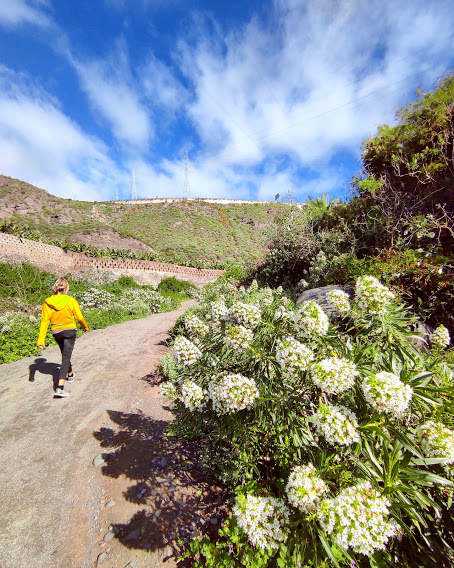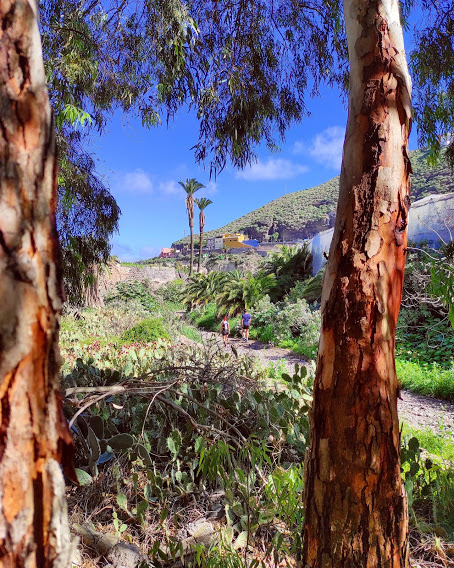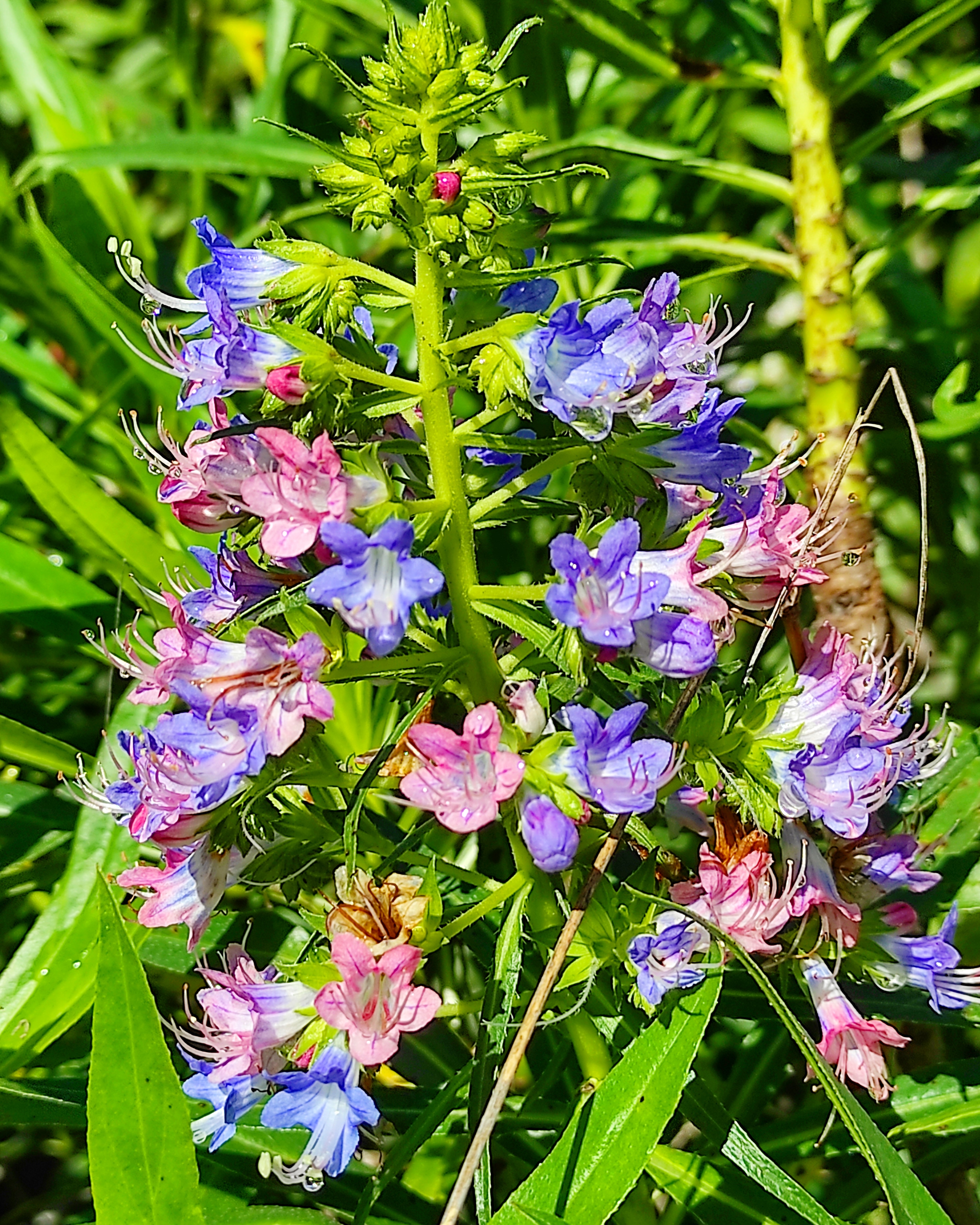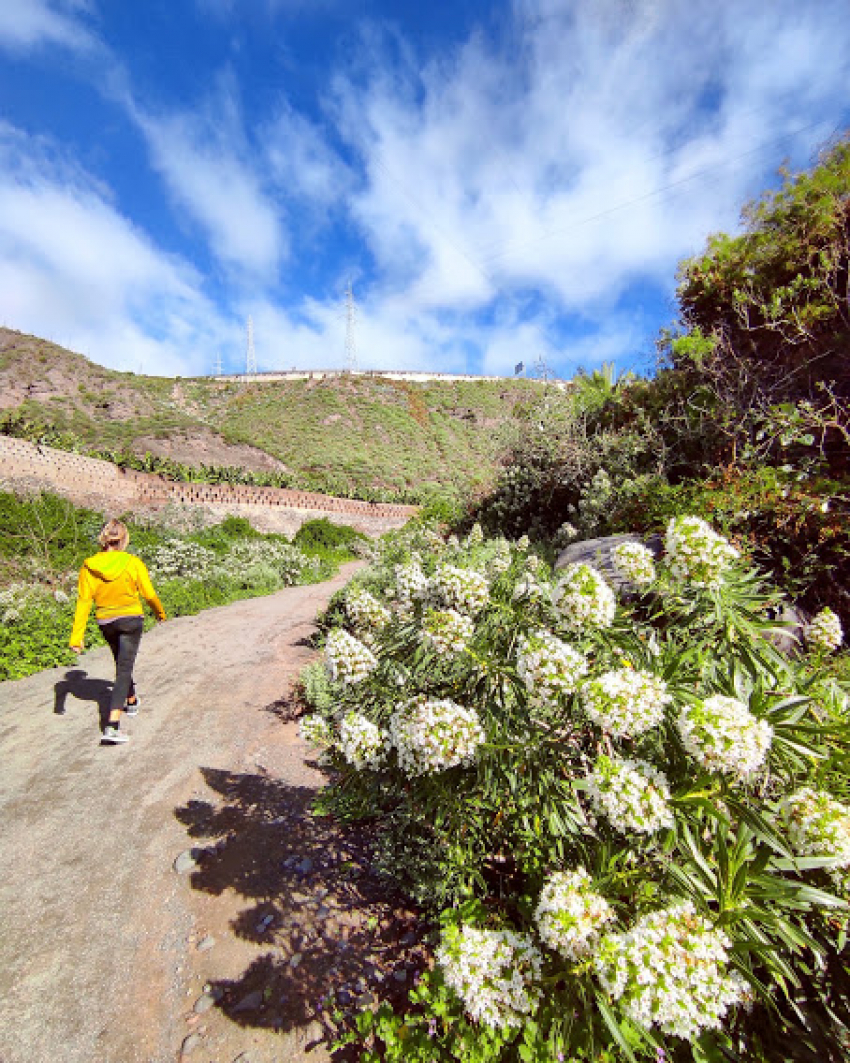White Flower Walk In Las Palmas' Only Wild Valley
 Late January and early February is the perfect time to explore Las Palmas' only remaining wild valley; The Guiniguada Barranco. It's when it's at it greenest and the white echium bushes are in full flower.
Late January and early February is the perfect time to explore Las Palmas' only remaining wild valley; The Guiniguada Barranco. It's when it's at it greenest and the white echium bushes are in full flower.
It's an easy walk between Triana and Santa Brigida past the Jardín Canario botanical garden. The path has recently been widened so you can now walk or mountain bike all the way to Santa Brigida town without having to scamble over the barranco floor.
From the start of the trail by Triana, it is 8.8km to the Maipez bar just below the Jardín Canario. From here you swap into the Barranco de Santa Brigida and a further three kilomtres takes you past La Calzada village to arched bridge popular with bungee jumpers. The trail continues for 5km up the wide valley floor all the way to Santa Brigida past Angostura and Las Meleguinas villages.
 The lower part of the trail goes past banana plantations before the valley gets wilder and you leave the ridgetop houses of Las Palmas behind. The top half is greener and narrower with more banana plantations and some big houses. Between the Maipez and the Angostura bridge the barranco is narrow and steeper while the ñast part is a is a mix of fruit orchards, farms and palm groves.
The lower part of the trail goes past banana plantations before the valley gets wilder and you leave the ridgetop houses of Las Palmas behind. The top half is greener and narrower with more banana plantations and some big houses. Between the Maipez and the Angostura bridge the barranco is narrow and steeper while the ñast part is a is a mix of fruit orchards, farms and palm groves.
There are no shops or toilet facilities along the way so take plenty of water and snacks. The trail is wide and not steep although bits of it are cobbled and awkward on a bicycle. The top half of the walk has several picnic sites with shade and benches.
 Normally, you can keep walking along the roadside to the bottom entrance of the Jardín Canario, then up through the garden to the bus stop for a ride back down to Las Palmas. However, the JC is only open via the top entrance at the moment betwenn 09.00 and 14.00.
Normally, you can keep walking along the roadside to the bottom entrance of the Jardín Canario, then up through the garden to the bus stop for a ride back down to Las Palmas. However, the JC is only open via the top entrance at the moment betwenn 09.00 and 14.00.
If you want to stop walking at the Maipez (9km from Triana) the best option is to call a taxi (less than 10 euros back to the city). The Maipez itself is still open although you aren't allowed inside at the moment. Its devilled eggs (huevos rellenos) are a good snack after a long walk.
The best radio taxi service in the area is TARA: 928 460 000
Nature Notes
 Every January the Guiniguada Valley explodes into colour as the white echiums flower alongside daisies and nasturtiums.
Every January the Guiniguada Valley explodes into colour as the white echiums flower alongside daisies and nasturtiums.
The echiums in the Guiniguada are Echium decasnei with white flowers but you do get the odd blue plant as well (see photo right). In the lower part of the Guayadeque Valley many of the E. decasnei have blue flowers.
The palm trees in the lower part of the valley are nesting sites for ring-necked parakeets and there are pairs of kestrels all along the trail; we saw two mobbing a buzzard. Gran Canaria blue tits, chiffchaffs and Berthelot's pipits (running along the ground) are common.
Gran Canaria Info recommends:
- Default
- Title
- Date
- Random













